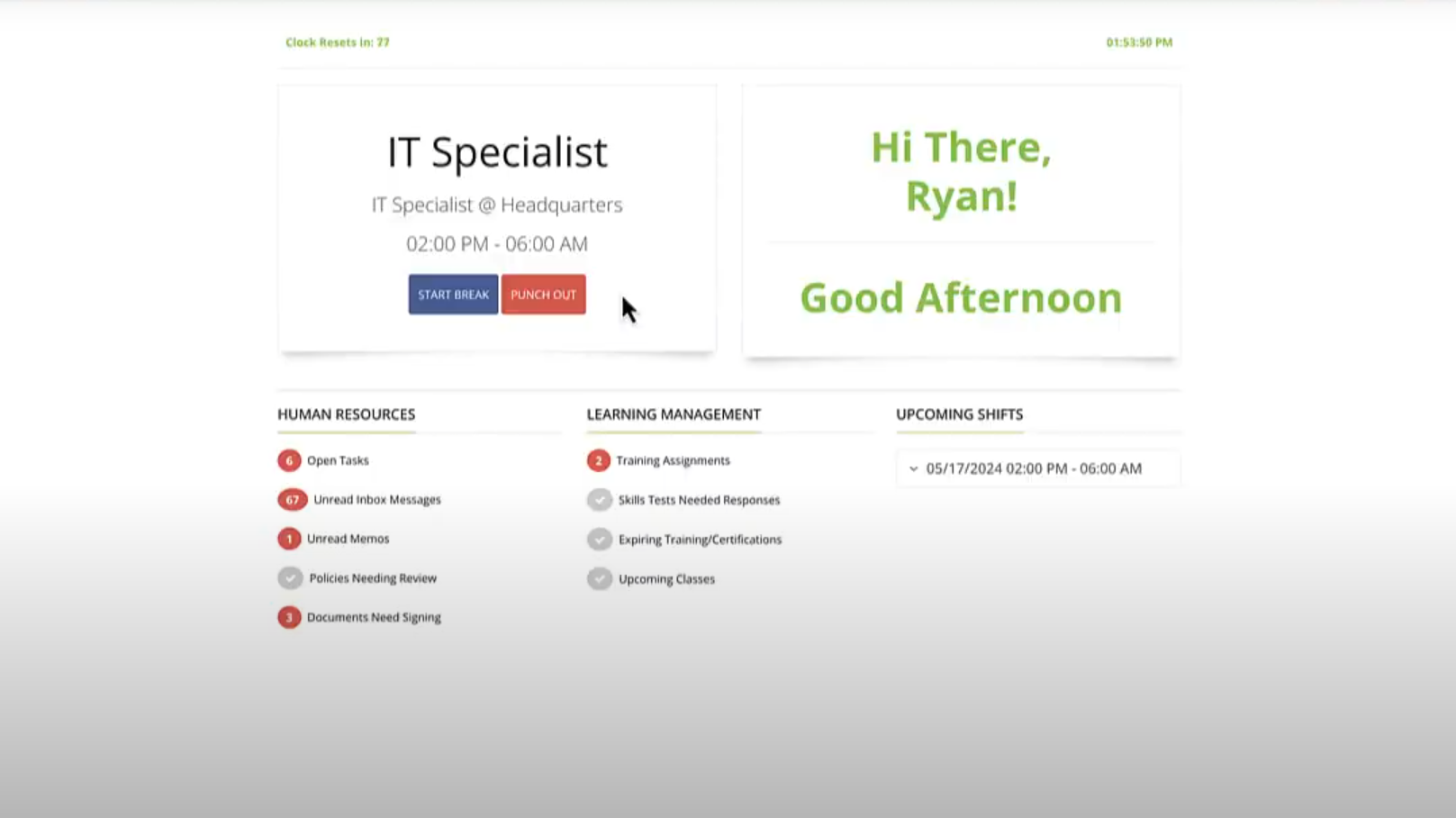Whether you are working to onboard an employee in an efficient manner, or working through continuing education for your staff – there are ways to make this learning more engaging and ensure that it *sticks.* Chances are if you are taking the time to educate your employees, it is important subject matter and you would like to improve the retention rate so your employees are always in the know on important on-the-job information. While you are creating your online course content, keep in mind these 10 ways to help your employees learn faster. These can be applied for anything from on-the-job training to company policies, and much more!
- Brain Warm-Up: do quick mental activities. Provide quick mental activities to stimulate brain activity and activate areas of the brain that may not always be in use. Similar to warming up your muscles before vigorous exercises, engaging the brain before learning can help the brain to be ready and focused to consume and retain the important information one needs for success. An example of a mental activity is counting backwards, or saying the alphabet backwards – it’s quick, it’s simple, but it is effective!
- Create a learning agenda: schedule time for learning as well as relaxation in manageable chunks. While this may not always be your job as someone that creates course content, it may be wise to show your organization the way in which learning best takes place. Creating an environment in which education is not only required, but encouraged can create a culture in which employees understand how best to consume information. Provide incentive for spending 20 minutes a day on learning a new skill or reviewing old ones, maybe a 20 minutes, on-the-clock break or something similar. This type of environment rewards learning and it’s good for the brain to understand that it is required to pay attention and focus for a chunk of time and then have a well-deserved break. Cramming information will never allow it to stick in the long-term memory, so spacing out learning is a great way to retain more!
- Use multiple learning methods: the more regions of the brain that store data about a subject, the more interconnection there is. Combine learning methods for the same subject. Within each course, providing additional ways to learn material is always recommended. Every time someone has to engage with content in a different manner, it increases the retention rate – not to mention, all people learn differently, so exposing each person to new and different ways to absorb information can pay off exponentially. From providing video-resources, quizzes, articles, and more, there are plenty of ways to ensure that each learning style is addressed throughout courses and enhance retention of information.
- Build up practical experience: search for ways to apply new skills in everyday life. There are plenty of things people have learned throughout their life that never actually get used, or are taught at the wrong time when the information is not able to be put into practice. You wouldn’t teach someone to snowboard in July in Florida and expect them to retain the knowledge and muscle memory when visiting the mountains in January. Similarly, it is important to find applicable ways to put the knowledge you wish to see used, into practice – quickly.
- Do one task at a time: research suggests that multi-tasking can actually hinder the learning process, so you should try to focus on one task at a time. This is harder to put into practice than you think. Encourage employees to put away their phones, silence their emails, block off their calendar to let others know they are busy. Creating an environment where it is normal and accepted to take the time for continuing education ensures that employees will take it seriously too. Allow them the ability to focus all their attention on this learning instead of focusing on all the other distractions that come from work.
- Test employees regularly. Studies have highlighted higher information retention rates in those who regularly self-test compared with those who don’t. Provide an area of your online course that allows for people to self-test. Even providing study groups or time for collaborative learning is important to challenge others in mastery of skills or knowledge. It is not necessary to have a 100 question test to determine whether or not someone has learned the information, instead break up the content with mini quizzes to ensure that learning is taking place throughout the process, instead of going back to relearn everything there is to know.
- Don’t reward cramming. Studies show that spacing out learning and reviewing information periodically is better for retaining information for longer whereas cramming is only mildly effective in the short-term. By providing information well in advance from when the expectation is that an employee will need to put those skills into practice helps relieve employees of the stress of cramming. Encouraging learning breaks each day on the job, or rewarding those that complete courses over a period of time will show each employee that cramming is not the answer when learning important material and time management is key to mastery.
- Teach others. Teachers have reported that teaching something to other people is one of the best ways of learning something. Provide space for the employees to become the teachers to enforce their own knowledge of the material. Instead of feeling like you are responsible for all the content that the employees, across job functions and departments, need to know and understand for success – find the people that are willing to teach and lend a helping hand to others to show off what they know and reinforce their own learning.
- Pay attention to work surroundings. Studies show that unsuitable surroundings can have a negative impact on how well people learn and retain information. Make sure your learning environment is clean, tidy and at a pleasant temperature. Providing an environment at work where employees can go to maximize learning away from their desks and peers can increase information retained and the overall learning environment.
- Use mnemonic devices to compress information. Creating ways to show employees how to best memorize information can be very helpful. In math, learning PEMDAS (parentheses, exponents, multiplication, division, addition, subtraction), as a way to understand in which order to solve an equation is easily recalled years and years after initially learning. Providing little “cheats” such as this will help increase knowledge retention and recall for years!

What a list – the ten ways to help employees better engage with course content and increase learning potential through recall and retention. There are many other helpful tips that can boost the learning of your employees – this was only a start, but by adding these little strategies to your repertoire when creating a course or an environment of learning within your workplace, you will begin to notice higher levels of retention.



